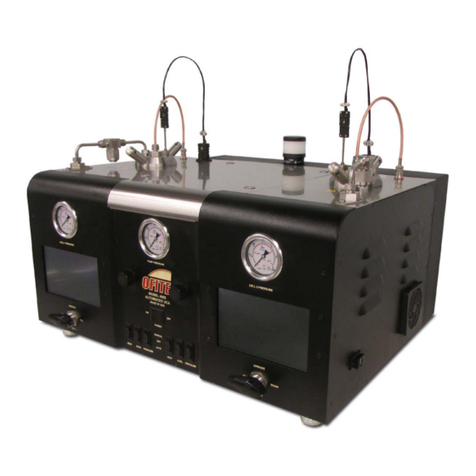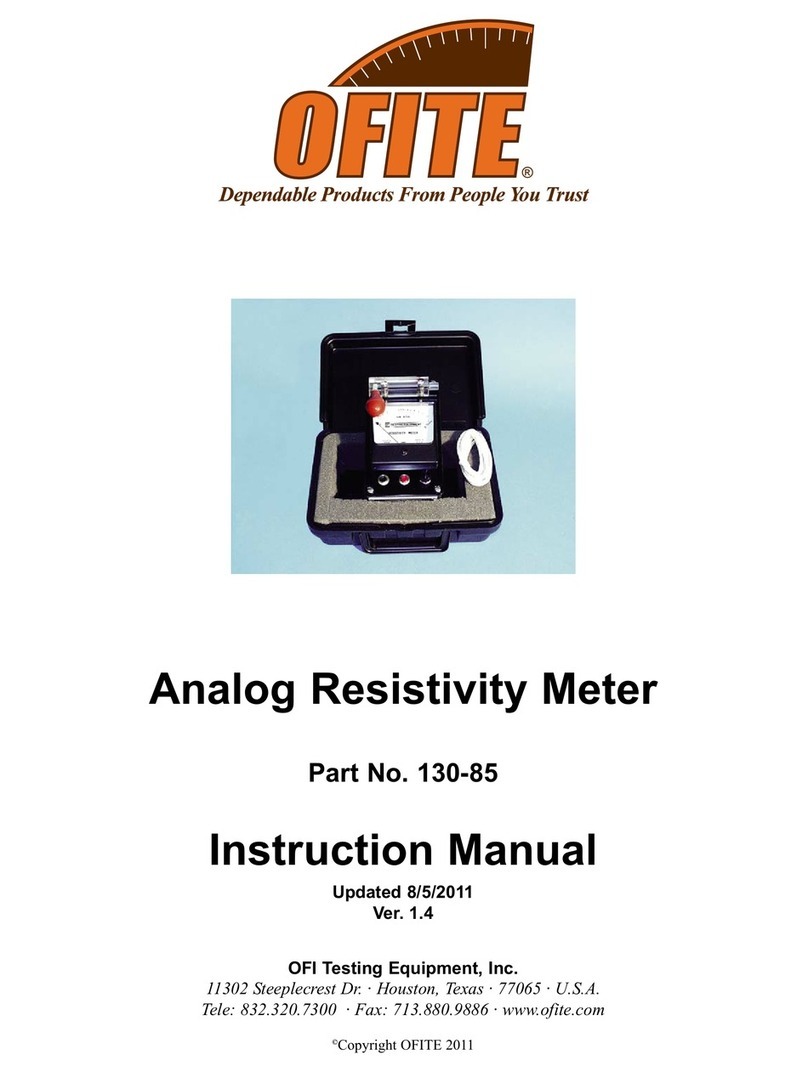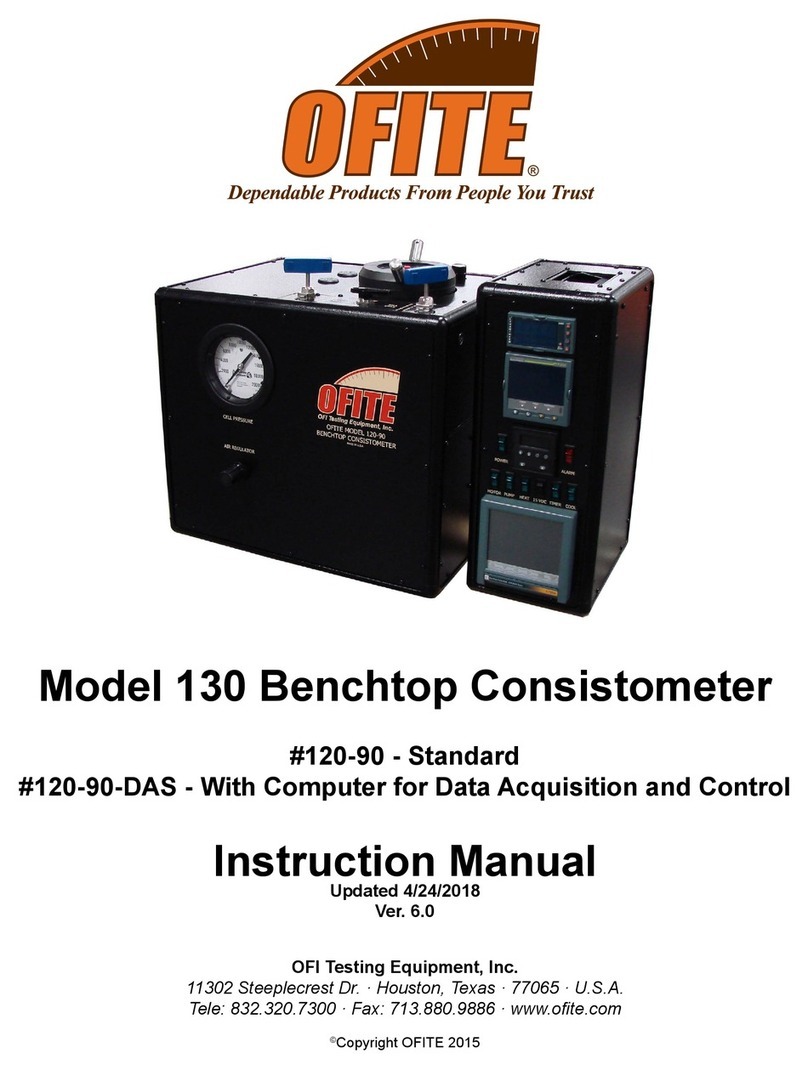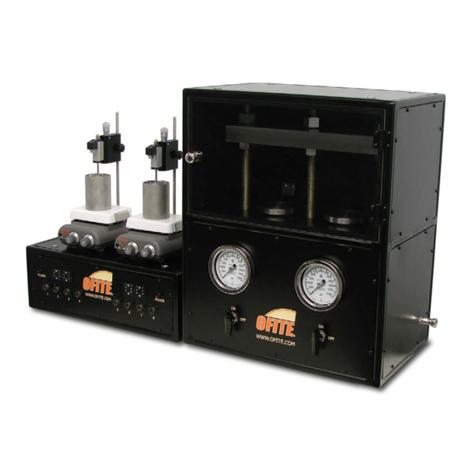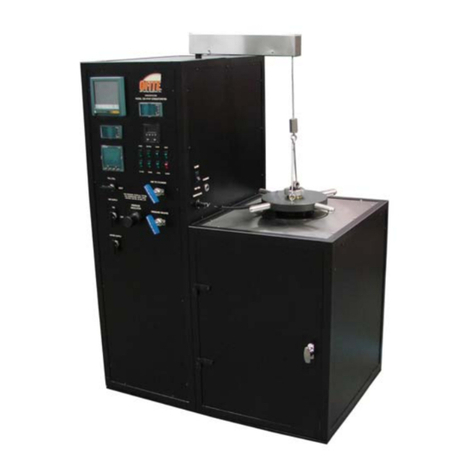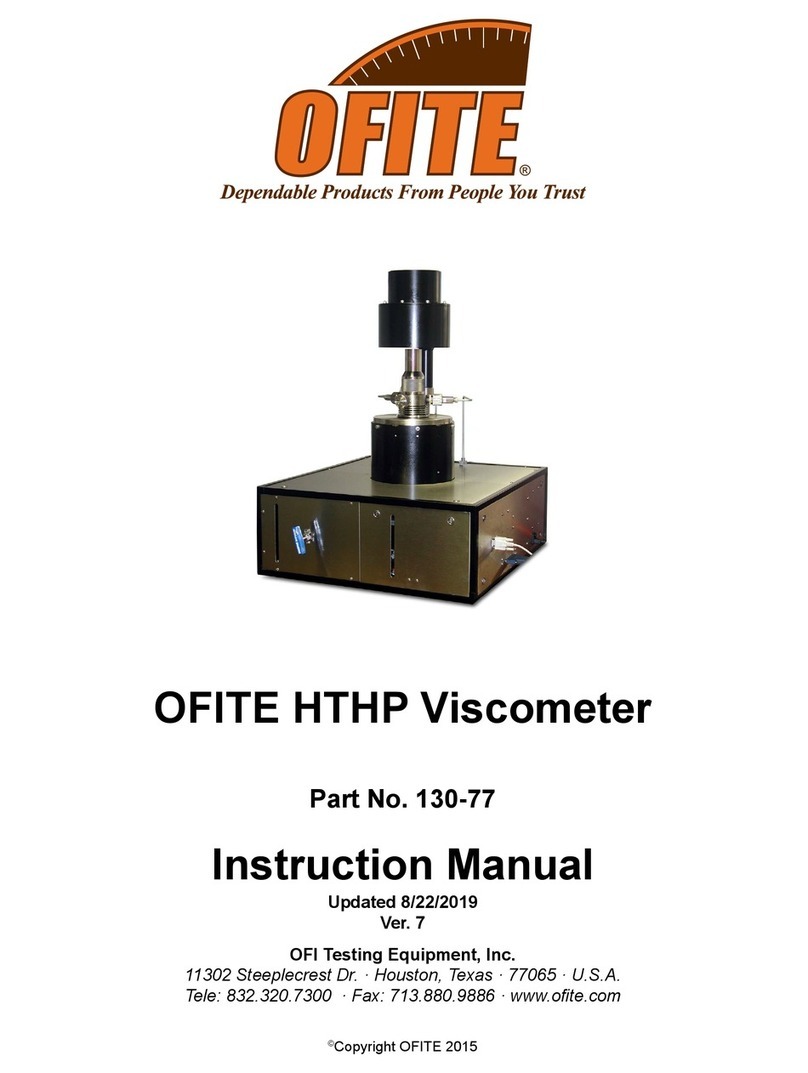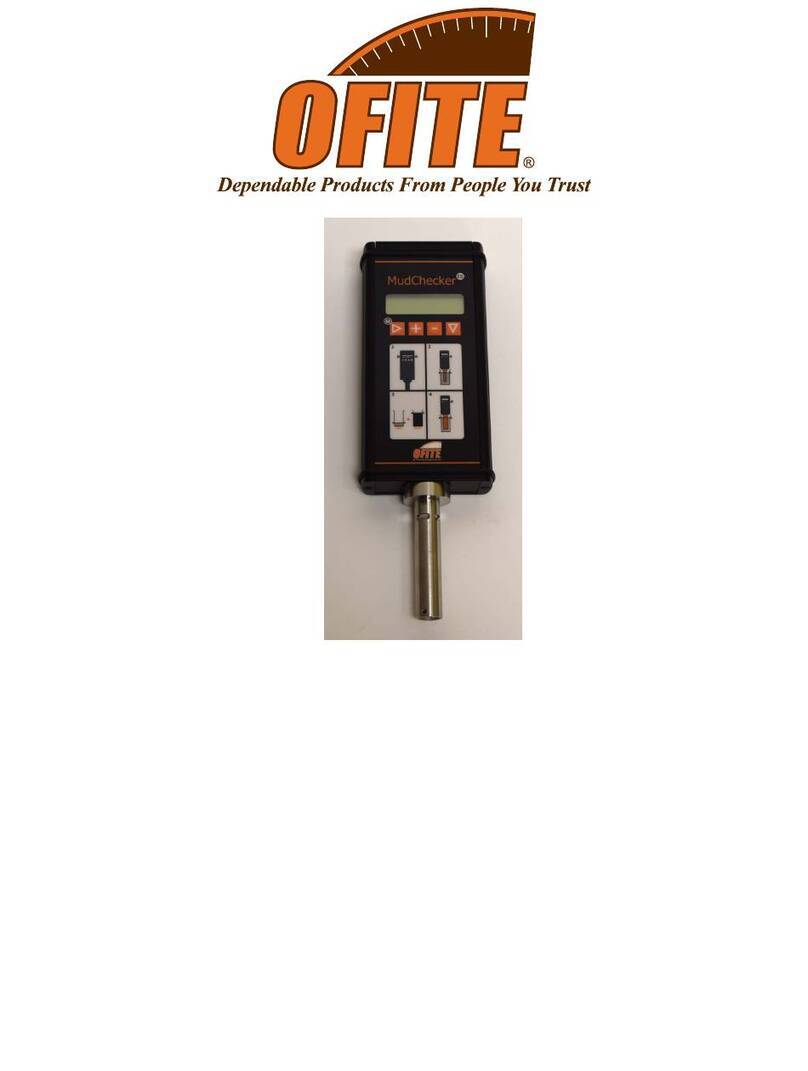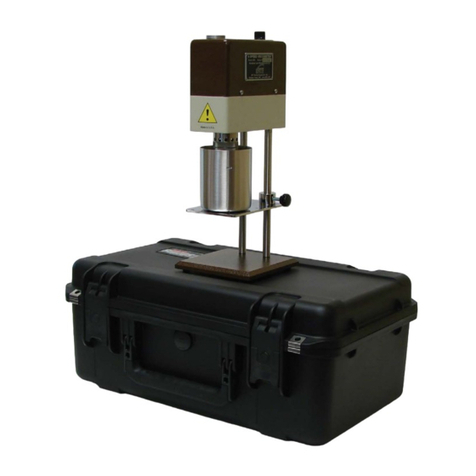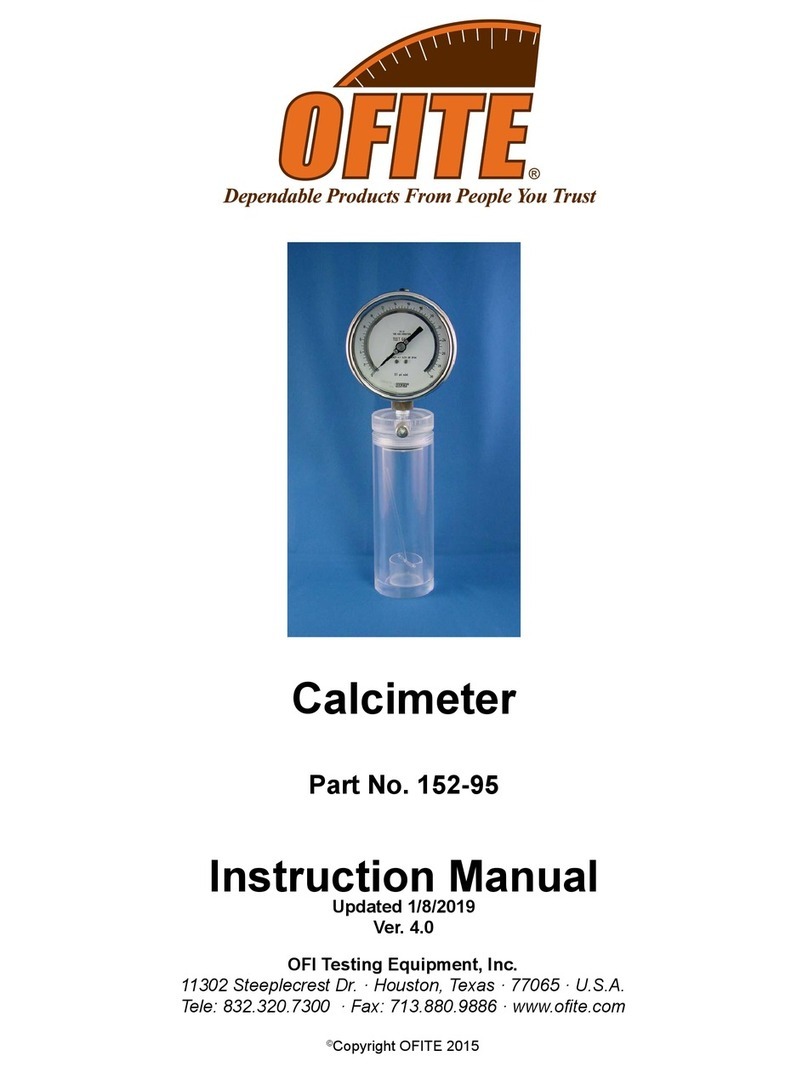
OFITE, 11302 Steeplecrest Dr., Houston, TX 77065 USA / Tel: 832-320-7300 / Fax: 713-880-9886 / www.ote.com 3
During cementing operations, the time required for a cement slurry to set is
of primary concern. Under an ideal situation, minimal time would be required
to successfully pump the slurry, which immediately upon placement, begins
to develop compressive strength. However, if insucient time is allowed to
fully pump the cement, it will be necessary to drill the cement remaining in the
casing string. Remedial operations such as this are very costly. Conversely,
cements that are successfully placed, but require considerable time to
cure, consume valuable rig time, which is also quite costly. Laboratory tests
should be conducted under simulated reservoir conditions to examine the
actual thickening time of the slurry. The OFITE HTHP Consistometer was
specically engineered to determine the thickening time of well cements
under simulated downhole pressures and temperatures.
A cement is mixed and poured into the slurry cup assembly. The slurry cup
is placed into the test vessel and pressure is increased via an air-driven
hydraulic pump. A PID temperature controller governs an internal heater,
which maintains the necessary temperature prole, while a magnetic drive
mechanism rotates the slurry cup assembly. A potentiometer controls an
output voltage, which is directly proportional to the amount of torque the
cement exerts upon an API-approved paddle. The included software controls
the instrument and records temperature, pressure, and cement consistency
as a function of time.
- Touch screen display for standalone operation
- Computerized Data Acquisition and Control system provides detailed test
information in convenient formats and can control multiple units from one
computer. RS-232, Ethernet, and USB connections available.
- Automatic temperature and pressure control
- External cooling jacket aids cooling of test cell
- Automatic, programmable speed motor (0 – 300 RPM) powered by a
magnetic drive
- Easy-to-use two-piece lift-o cap for pressure cell
- Drip tray next to cap provides a place to set the cap between tests without
dripping oil on the unit casing
- Convenient oil reservoir features a cap with built-in funnel to help prevent
spills, a removable top and bottom that make cleaning easy, and a sloping
bottom that collects sediment for easy removal
- Visual indicator provides an at-a-glance status update during testing
- Small footprint saves valuable lab space
- Temperature, pressure, and consistency alarms provide automatic
shutdown for safety
- Conforms to API Specication 10 guidelines
- Air/Nitrogen Supply (100 – 120 PSI / 689.5 – 827.4 kPa)
- Water Supply for Cooling (40 PSI / 276 kPa)
- Water Drain
- 220 Volt, 50/60 Hz, 25 Amp electrical power supply
Intro
Description
Features
Requirements












